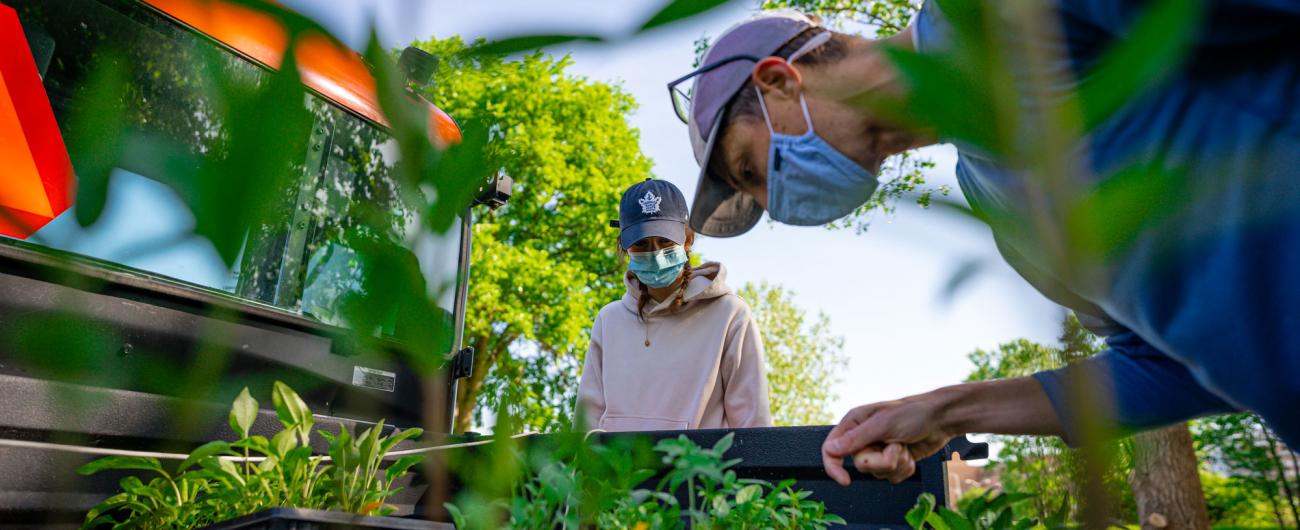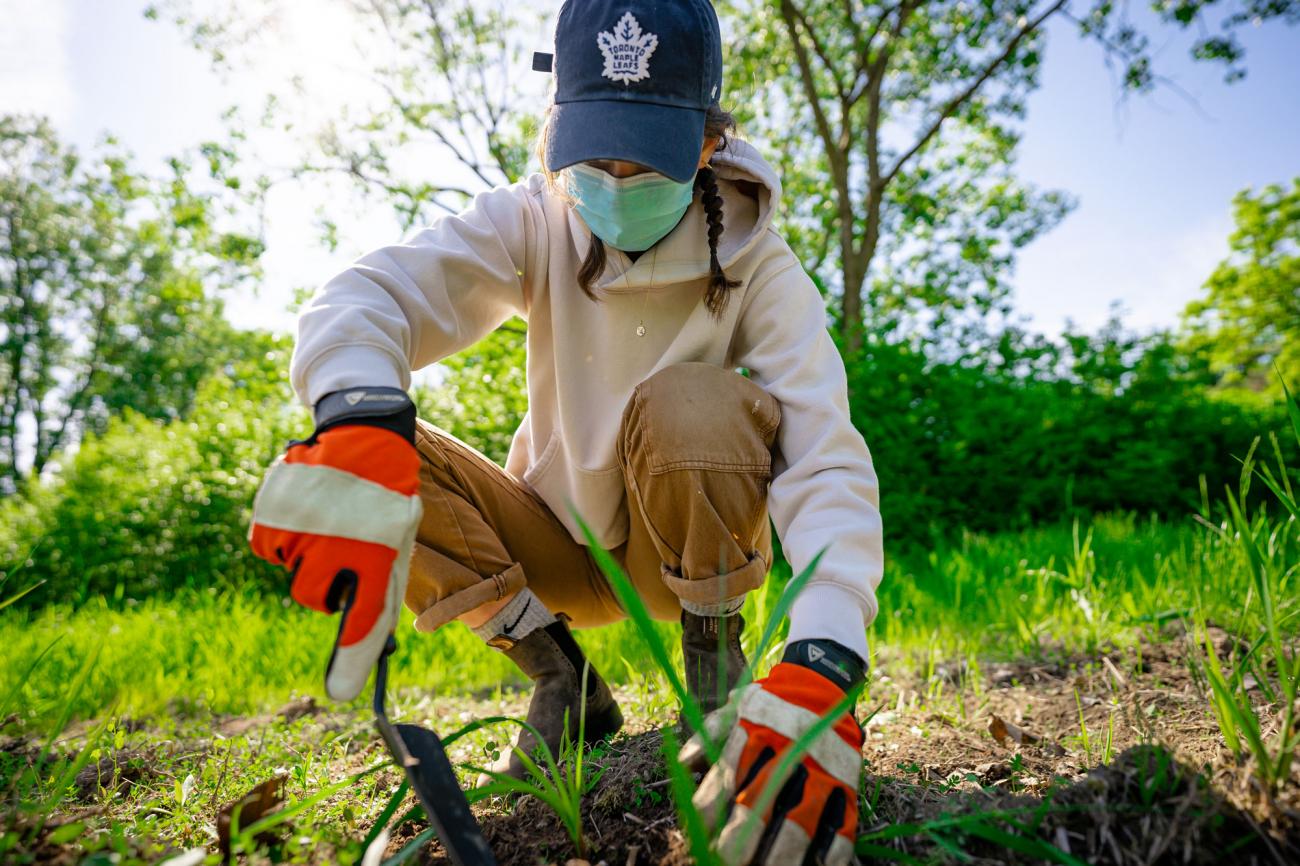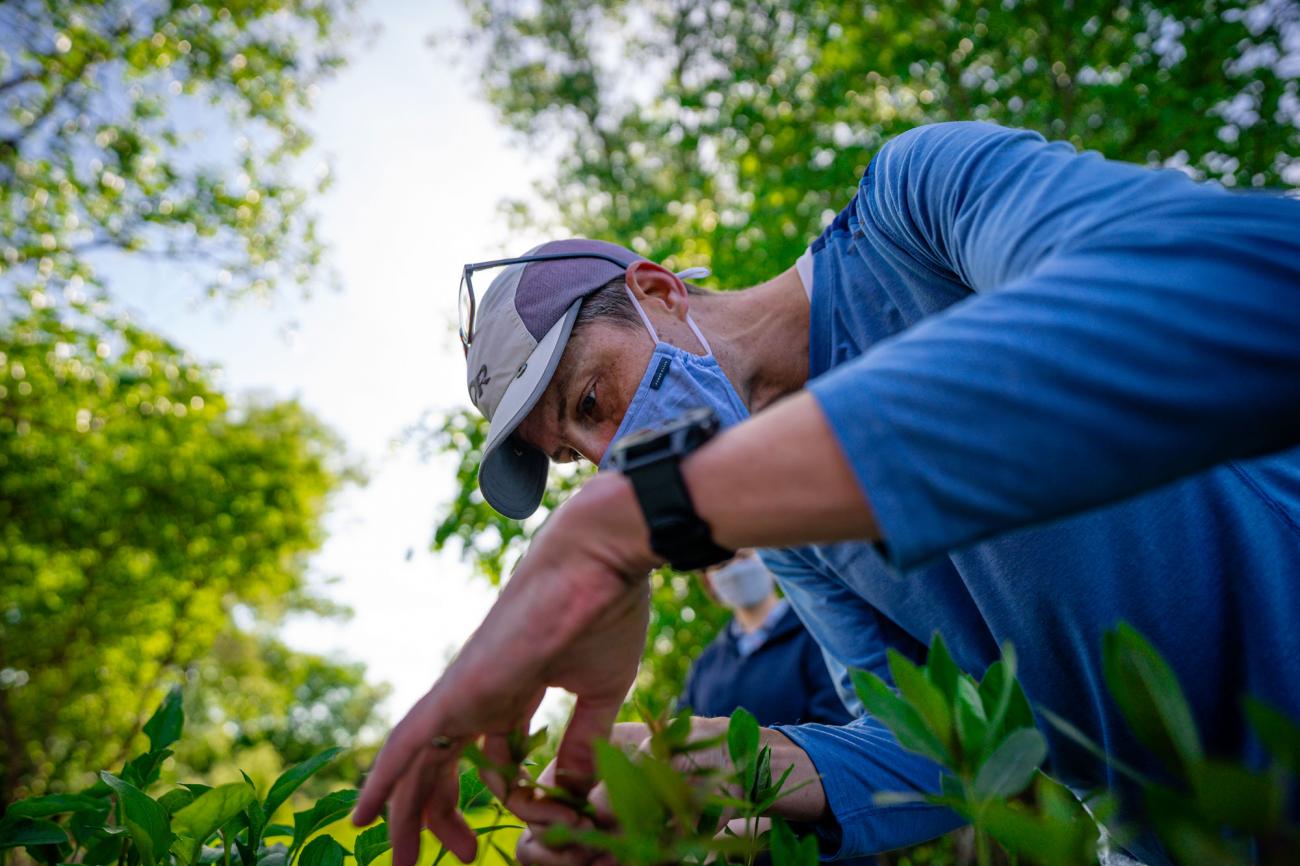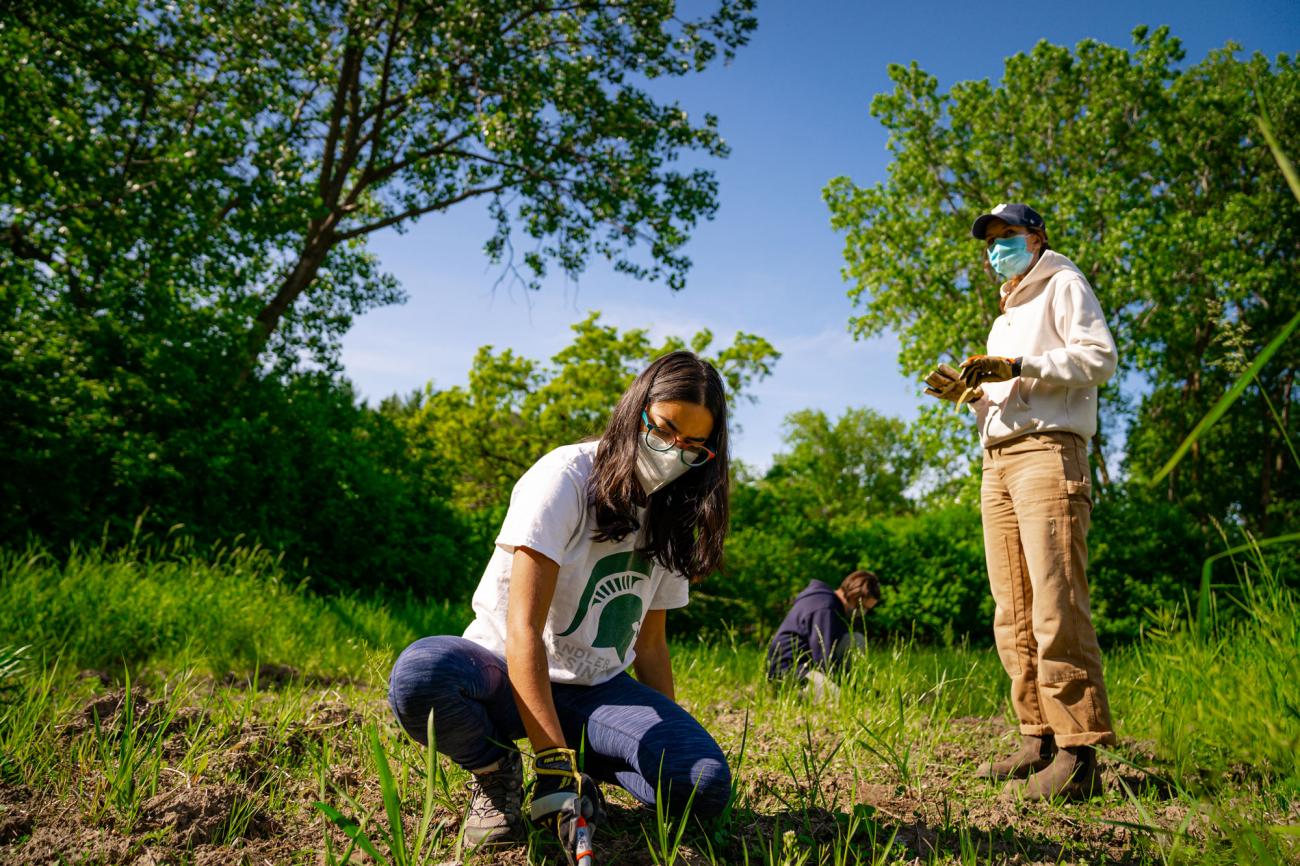Grant helps MSU welcome bees and butterflies to campus

Danielle Fowler
June 9, 2021
Not only does MSU have 20,000 trees on campus and counting, it’s also becoming a more friendly place for bees, butterflies, and other native pollinators.
Like the rest of Michigan, MSU’s campus is home to various invasive species that can arrive accidentally through international shipping and travel, or intentionally by people importing plants for gardens and landscaping. They jeopardize biodiversity, permanently alter habitats, and can sometimes lead to the extinction of native plants and animals.
The fight against invasive species is a constant one, and MSU is making a concerted effort to tackle it on campus. In collaboration with the College of Natural Science’s Plant Biology Department and the student Fisheries and Wildlife Club, IPF Landscape Services is helping reclaim an area of campus just off Trowbridge Road.

Matthew Bailey, MSU’s Landscape Services manager, and Lars Brudvig, associate professor of plant biology in the College of Natural Science, applied for a grant from Project Wingspan as part of a larger effort to make campus pollinator friendly.
Project Wingspan is a three-year project through the Pollinator Partnership (pollinator.org) designed to increase the quality, quantity, and connectivity of pollinator habitat across the Midwest and Great Lakes region.
“We’re adding a lot of pollinator gardens on campus,” Bailey said. “We installed a garden north of Shaw Hall with the Sustainable Spartans group, and we’re also restoring the banks of the Red Cedar River to create a pollinator corridor. This Project Wingspan grant is another step on our way towards a bee-friendly campus.”

As a recipient, MSU received sixteen different species of Michigan native seed including black-eyed Susans, buttonbush, foxglove, purple coneflower, milkweed and blazing star wildflower to help reclaim the site as native wildlife habitat.
An IPF arborist crew coordinated by Jerry Wahl cleared the area of invasive buckthorn in preparation for the project. Buckthorn, a shrub native to Eurasia and introduced to the Midwest in the 1880s as an ornamental plant, has leaves that shade out spring wildflowers and keep them from growing.
“IPF Landscape Services has been a huge help for us,” said Juhi Parekh, president of the Fisheries and Wildlife Club. The club was granted management rights to this land by MSU in 1975. “There’s no way we could have cleared this area ourselves.”
After removing the plants, IPF gardeners tilled and prepped the soil, and on May 27 the team of IPF staff, Brudvig, and students from the Fisheries and Wildlife Club began planting.

This area of campus is special because of the diversity of its habitats.
“You have a wetland, a forest area, and a prairie area,” said Sarah Naughtin, habitat chair of the MSU Fisheries and Wildlife Club. “So, it’s a very small space that gives us a nice snapshot of our bigger initiative across campus.”
As Brudvig identified and distributed the plants, he explained the importance of this type of work.
“This land used to be an old farm field,” Brudvig said. “Since then, it’s been disturbed by the construction of Trowbridge Road and the Farm Lane overpass.” Native plants disappeared as these projects created environments for invasive species to flourish.
“A lot of the animals that we could support on campus rely on native plants, like bees, and butterflies, and other pollinators,” he said. “Without those native plant species, we can’t support those populations.”
For example, monarch butterflies look for swamp milkweed and common milkweed, both native to Michigan, to lay their eggs. When the larvae hatch they eat the milkweed leaves, which contain toxins that make the caterpillars taste horrible to predators.

Another benefit of reclaiming the space with native species is beauty.
“Being pollinator-supporting plants, they all have really showy flowers, advertisements for pollinators,” Brudvig said. “There are going to be a whole bunch of beautiful and spectacular flowers as this area matures.”
Monitoring and maintenance of the area will continue over the next few years, alongside the continuing Red Cedar riverbank pollinator reclamation project. With these continued efforts, MSU’s campus will soon be a thriving native habitat for butterflies, bees, and other native critters that keep our environment healthy.
